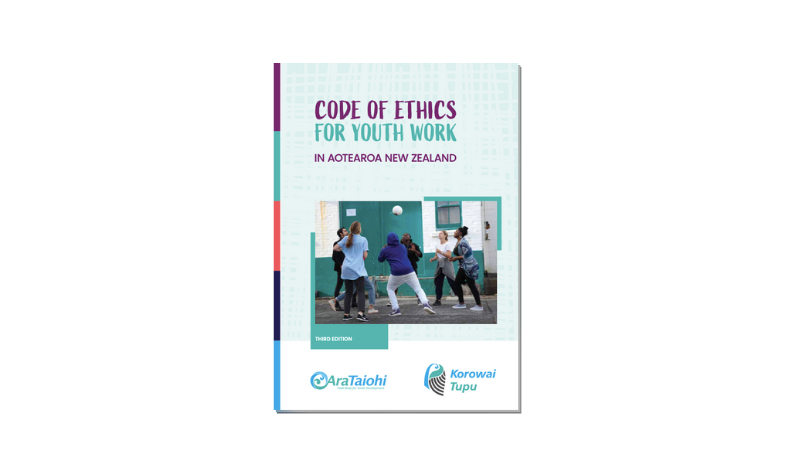Māori Youth Development Practices
A range of sources concur that historically, young people in Māori communities participated in a range of developmental processes to prepare them for adulthood and mark the transition to roles of responsibility within their whānau and hapū.
Inter-generational transmission of knowledge and values was (and still is) critical to the wellbeing of the hapū and involved passing on the skills and understanding that were essential to survival in terms of economic and social wellbeing. Elders were considered a vast repository of information and their wisdom and knowledge considered essential to the teaching of practical and social skills, ethics and esoteric knowledge. (Hemara, 2000)
The development process was initiated before birth and carried on throughout childhood and adolescence. Children were active participants in political affairs and were encouraged to engage in community discussions and activities from an early age. (Hemara, 2000)
Common Approaches
Strong bonds between individuals and whānau were based on trust and respect that ensured the health, survival and growth of rangatahi and the community, and the wellbeing of future generations. A range of rites of passage were used to mark various transitions as the individual moved from one phase of life to another.
At least three strategies were commonly employed to ensure young people developed in ways that were healthy and that equipped the hapū with people who could protect and enhance the interests of the community:
- Pūkengatanga: One of the most common and important strategies was where an elder (pūkenga) took a young person under their care and taught them directly, as a mentor to feed them knowledge. The student would accompany the elder to hui and special occasions, the child functioning as a link between generations that ensured the survival of critical knowledge about connections between people, places and the natural world. (Stirling, 1980)
- Whare Wānanga: Whare wānanga were formal structures established to pass on specialist skills and knowledge, participants were often selected because they displayed gifts in the particular interests of each whare wānanga (e.g. diplomatic skills, cultivation, physical aptitude, carving, etc). (Royal, 2003; Best 1929)
- Urungatanga: This approach has been termed ‘education through exposure’, where participants were not given formal instruction but were exposed to a situation and expected to work out what was going on and solve problems that arose. This type of education included areas as diverse as cultivation, childcare, and public occasions such as the structure and roles within hui and tangi. (Hemara, 2000)
Traditionally a code of ethical practice existed within every community through the maintenance of tikanga and kawa and practices and concepts such as tapu, noa, utu, hara, muru and koha. These codes of ethics were not written but were developed and maintained through enduring relationships within hapū.
Like any society there were challenges and injustices – Māori communities were not perfect, but tikanga was in place that meant that when people violated the boundaries established by the community there were consequences and mechanisms to help retain and protect the health of the community.
Te Ao Hou
The arrival of other cultures contributed to rapid changes in social structures that challenged much of the long-established social fabric in communities across Aotearoa.
As the watershed document Puao-te-Ata-tu described in 1986:
The history of New Zealand since colonisation has been the history of institutional decisions being made for, rather than by, Māori people. Key decisions on education, justice and social welfare, for example, have been made with little consultation with Māori people. Throughout colonial history, inappropriate structures and Pakeha involvement in issues critical for Māori have worked to break down traditional Māori society by weakening its base – the whānau, the hapū, the iwi. It has been almost impossible for Māori to maintain tribal responsibility for their own people. (p17)
Since European settlement, Māori have continued to retain the values, practices and beliefs of their tūpuna and have endeavoured to protect their right to raise their young in ways that keep them connected as Tangata Whenua.
All youth workers, regardless of their awareness of the situation, participate in one way or another in this ongoing process.
Youth workers, from all cultural backgrounds, have a unique contribution to offer whānau in strengthening the relationship between rangatahi and their whānau, marae, hapū and iwi.
A New Code of Ethics
This Code of Ethics for Youth Workers in Aotearoa presents another powerful opportunity to support the re-establishment of strong, healthy relationships, between rangatahi and their whānau, marae, hapū and iwi.
This document provides youth workers with guidance on how they can make a significant contribution to supporting Māori development in every context and community. As a living document it is anticipated that this guidance will be refined over time as the document evolves in response to further developments in the sector and in society at large.
NextA Brief History of Youth Work in Aotearoa